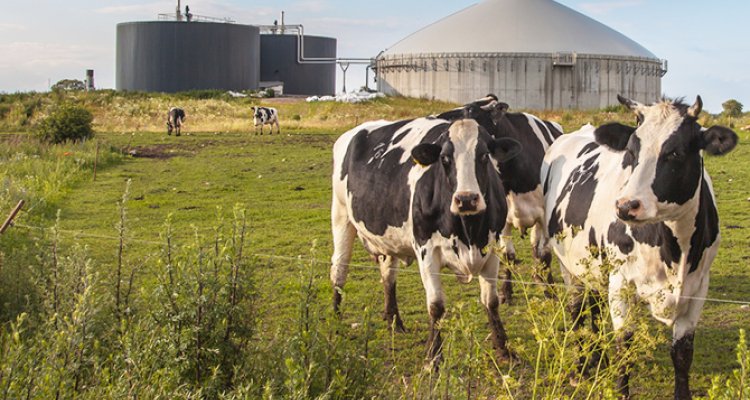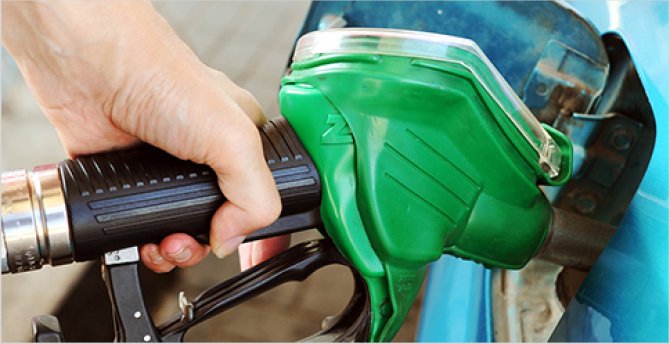
Drive a car around the world fuelled by the manure of five cows
It may be hard to believe, but waste can increase its value and is in fact becoming a valuable raw material. Cow manure is one such example and is readily available on the market. It contains valuable minerals such as nitrogen and phosphorus, which are both needed for plant growth. Besides these minerals, manure also contains organic material. This organic material contains energy that can be released by bacteria in the form of methane, the basis for Compressed Natural Gas. What is it used for? That’s right, as car fuel. It’s possible to drive up to 9,000 km on the annual manure production of a single cow.
Producing manure
Dairy cows produce manure every day. As is the case for all living animals, the manure produced by a cow is based on its diet. Cows are very efficient in the use of their food, but there is some organic material that they cannot digest. On average, a dairy cow produces 27 m3 of manure each year.
How can cars be fuelled by this manure?
Manure from cows can be fermented with the aid of bacteria. This process produces biogas and takes place in an anaerobic digester. The digester is filled with cow manure on a daily basis. On average, manure remains in the digester for about 60 days, during which time most of the organic material is converted into biogas. The gas in this digester contains approximately 50% methane and 50% CO2. To be able to use it as a fuel, the CO2 needs to be separated from the methane. The biogas needs to be upgraded. The minerals are unaffected and come out along with the residual product, digestate, which can be used as a fertiliser.
Upgrading biogas

To be able to use biogas as a fuel in cars, the gas from a digester needs to be upgraded. As stated above, the CO2 needs to be separated from the CH4, the methane. Biogas can be upgraded using a variety of techniques. One of the most efficient ways of doing so is to use membranes. The biogas is pressed through a very fine mesh through which the methane is separated from the CO2. The CO2 can then be used in the production of fizzy drinks or to stimulate plant growth in greenhouses. It can also be injected into an algae culture to support the production of biomass. The methane, or natural gas, can be supplied to the national grid or can be used as fuel for cars. CNG, or Compressed Natural Gas, is the cleanest car fuel around today.
Driving around the globe

The most efficient CNG-fuelled car can drive 35 km per kg of CNG. In terms of the amount produced by one cow in one year, this equates to almost 9,000 km. With the annual manure production of five cows, a car could drive 45,000 km, which is more than the circumference of the Earth at the equator (40,000 km). At the same time, those five cows would have produced enough nitrogen and phosphorus to support 3.0 hectares of high-yield wheat crops.
There are many different ways of producing more biogas. Together with manure, other organic materials can also be used in digesters to produce even more methane and minerals for fertilisers. For instance, the organic waste of urban populations and grass from nature reserves could be - and are - used to produce methane and minerals such as nitrogen and phosphorous, phosphorous being particularly important. This procedure would prevent the annual loss of millions of kg of phosphorous produced by Dutch cities, for example. It would also result in the capture and harnessing of excess minerals which currently find their way from arable land onto nature reserves. Moreover, more biogas will be available and cars will be able to drive more kilometres fuelled by CNG.
A wide range of projects are being initiated at Wageningen University aiming to make use of valuable raw materials such as cow manure.